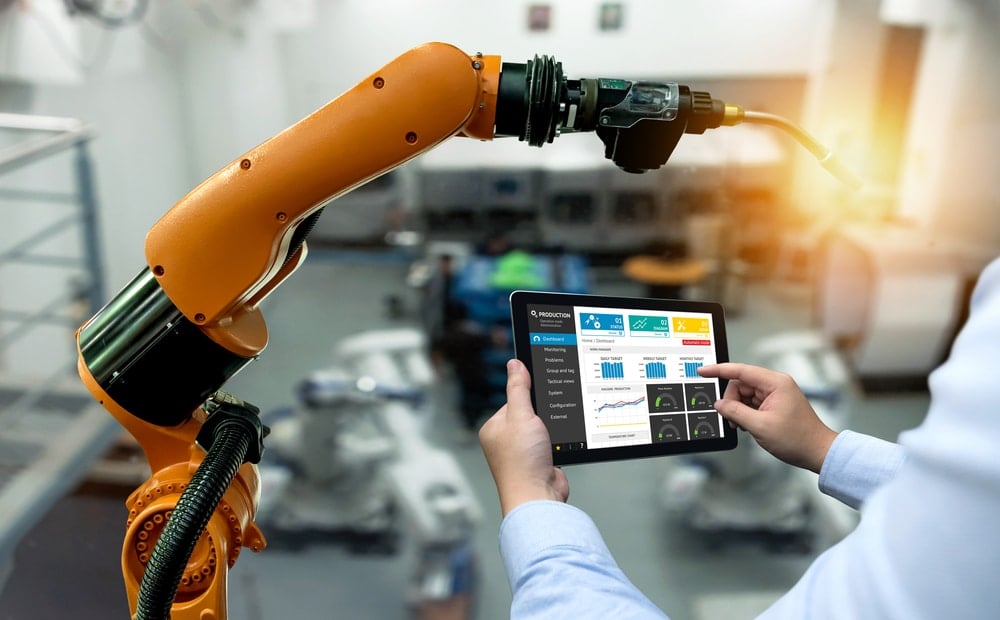The COVID-19 pandemic disrupted the stability of many industries. After the outbreak of the pandemic, work can be completed remotely, and everyone is able to adapt quickly so that the work from home system can be implemented immediately. Another case with the manufacturing industry is almost impossible to implement WFH so many companies are forced to stop production except to make essential products. But, this is not the case for the manufacturing industry. So, most companies had to stop production unless they are making essential products, but none the less we still need manufacturing for the society to work and this is why it is important for us to understand manufacturing industry trends.
According to Manufacturing.net, the manufacturing industry witnessed a 6.8 percent fall in growth, with losses particularly accentuated in the first part of the year. However, in the World Manufacturing Production report made by United Nations Industrial Development Organization (UNIDO), the manufacturing industry bounced back with 12 percent growth in the first quarter of 2021. Along with the revival, new manufacturing industry trends have emerged.
Manufacturing companies also often use ERP software to facilitate business activities. Because it can enable the company to make accurate decisions. Moreover in these times of recovery, manufacturing companies must quickly strengthen their foundations to stand tall again. You need to adapt to the changes that have happened over the past year. In addition, it is important to evaluate what is still lacking in your company to remain relevant and competitive. Here are the manufacturing industry trends that you should learn.

Table Of Contents
Ongoing Workforce Shortages
By 2022, the numbers of unfilled jobs are likely to limit higher productivity and growth. Last year, Deloitte estimated a decline of 2.1 million skilled jobs, or jobs that require specialized training or certain skills, by 2030. To attract and retain workers, you need to develop strategies, such as reskilling and improving your employment brand. Reduce the industry’s public perception gap by making manufacturing jobs a more desirable and promising entry point to have workforce needs met. Engage your company with a broader talent ecosystem of partners to reach diverse and skilled talent pools that will help you keep up with the current rise in retirement and resignation rates.
Manufacturers need to balance goals for retention, culture, and innovation. You should explore ways to increase flexibility in the company in order to attract and retain talent. Companies that successfully overcome workforce shortages and respond to the rapid changes of today have the opportunity to stay ahead of the competition.
Supply Chain Instability
Challenges in supply chain management continue to exist. Manufacturers face persistent hurdles that put their businesses’ resilience to the test, such as imbalanced supply and demand, rising raw material and freight costs, and slow delivery. Problems in transportation will continue to exist in 2022, including the shortage of truck drivers and congestion at container ports. When demand exceeds the supply, additional fees are more likely to be passed on to customers.
The root causes of supply chain instability may include overreliance on low inventories, rationalization of suppliers, and declining domestic capabilities. Supply chain strategies in 2022 are expected to cover many aspects. In response to disruptions, digital supply networks and data analytics can be effective. Supply chain management enables you to keep up with fast-paced markets with complete visibility and advanced analytics. You can plan, source, deliver and forecast the right products at the right time.
Inventory Management Changes
Each unit of inventory requires a cost, be it raw materials, MRO (maintenance, repair, and operation) items, or finished products. Therefore, you need to use a system that can streamline the amount of stock kept on hand. So it reduce costs associated with storage, taxes, and insurance. However, supply chain issues cause delays in the procurement of spare parts, materials, and so on. Supply shortages lead to downtime which results in production losses.
One way to deal with the problem is keeping a safety stock in case they can’t be replenished in a timely manner. You can use Inventory Management Software that features stock request management, stock aging analysis, and inventory forecasting for more efficient stock control.
Related article: Why Business Should Switch to Cloud Inventory Management
Transition to Smart Factory
In order to maintain growth and protect long-term profitability, you must embrace technological developments. It will corporate functions to the factory floor. Smart factories are one of the keys to gain a competitive edge. Many companies are making progress and seeing results from the implementation of more connected, reliable, and efficient systems in factories. However, this must go hand in hand with the right blend of vision and execution.
The existence of lighthouse factories, or factories that apply advanced manufacturing and AI-driven technology to get significant profits. It proves that this is possible to implement smart manufacturing. Some examples of the application of technology in smart factories are robots to reduce human workloads. It means machine learning to analyze data, industrial internet of things (IIoT) to create systems with predictive capabilities, and Manufacturing Software to manage production processes easily.
The Importance of Cybersecurity
There’s been a rise of high-profile cyberattacks in various industries, especially during the pandemic. It makes cybersecurity an essential part of risk management. The surge in attacks stemming from the connection of operational technology (OT), information technology (IT), and external networks requires more control. Obsolete systems and technologies will be unable to deal with increasingly sophisticated cyberattacks.
It’s not just cyber defenses that you should pay attention to, but business resilience to cyberattacks as well. Today, cybercriminals are starting to use malware that ties in to AI and cryptocurrencies. As a result, the damage caused is much more severe. In addition to intellectual property theft and financial losses, cyberattacks can shut down operations and disrupt the entire supplier network leading to compromised safety and decreased productivity. Therefore, you must improve cybersecurity in your company.
Also read: Cyber Security is Important for Business, Here’s How to Improve It
Environmental, Social, and Governance (ESG) Investing
As stated in Investopedia, ESG criteria are a set of standards for a company’s operations that socially conscious investors use to screen potential investments. Environmental criteria consider how a company performs as a steward of nature. Social criteria examine how it manages relationships with employees, suppliers, customers, and the communities where it operates. Governance deals with a company’s leadership, executive pay, audits, internal controls, and shareholder rights.
The existence of ESG strategy redefines and elevates sustainability in manufacturing. This concept of sustainable investing becomes a priority so that business actors do not only pursue profits, but pay attention to the impact of their business as well. It can for the environment, society, and government. ESG criteria affect financial conditions, competitiveness, and flow of funds from investors so that companies must set them as a priority.
Conclusion
After learning about manufacturing industry trends in 2022, it’s time for you to consider. Which trend is suitable for your company and adapt to it? You don’t want the business you’ve built to lose to the competition, so keep pace by implementing technology in the form of a Manufacturing System from HashMicro. Consists of various modules with the best features, our software can improve the operational efficiency of your manufacturing company. You can start HashMicro’s Manufacturing Automation Software demo for free now.





































